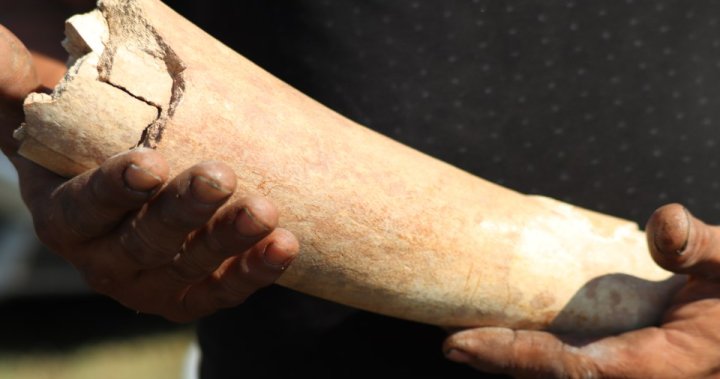While working on a project in his yard, a member of the Saddle Lake Cree Nation, located east of Edmonton, made the discovery of a lifetime.
A hard item about six feet below the ground was struck by Jarrod Cardinal’s shovel as he was working on a project in his yard.
Jarrod Cardinal commented, “I didn’t really know what it was at first,” without giving it any thought. It was becoming dark, so I pulled it out of the mud and tossed it aside.
The next day, he finally got a better look.
“At first, I believed it was made of wood. It simply baffled me. I had no idea what it was; I had assumed it would be a tusk or something, Cardinal added.
Carol Buffalo, Cardinal’s sister, who was present when he discovered the thing, stated, “We’re like, ‘What is a tusk doing here?'”
A University of Alberta palaeontologist received images of the mysterious find. Not only is it ancient, but it also originates from a creature you only learn about or see in museums.
“An expert confirmed that it was a mammoth tusk, and they told us so. He’s an authority in that area, and he immediately declared it to be real,” Cardinal stated.
Since the end of the last ice age, some 11,000 years ago, the vast majority of woolly mammoths have vanished from the face of the earth.
Although it was known that they roamed various areas of Alberta, Cardinal said he never imagined he’d locate one in its entirety.
“I was completely astounded! At first, I wasn’t sure what to make of it,” Cardinal admitted.
Buffalo remarked that the likelihood of discovering something similar in the dirt was “around one in a million.”
On the Saddle Lake Cree Nation, there was a buzz of excitement following news of the fossil discovery.
Everyone constantly approaching him to beg to see it because, according to Buffalo, “we’ve never seen something like that; you only see it in museums.”
Cardinal stopped excavating the area because he didn’t want to destroy any other potential fossils in the soil.
He intends to keep the fossil for the time being, but he encourages additional professional analysis of the tusk and the location where it was discovered.
It is recommended that anyone who believes they have discovered a fossil when excavating a basement or dugout stop, take pictures, note the location of the fossil, and contact the Royal Tyrrell Museum of Palaeontology in Drumheller.
A man from Alberta finds a prehistoric mammoth tusk in the Saddle Lake Cree Nation’s yard.

